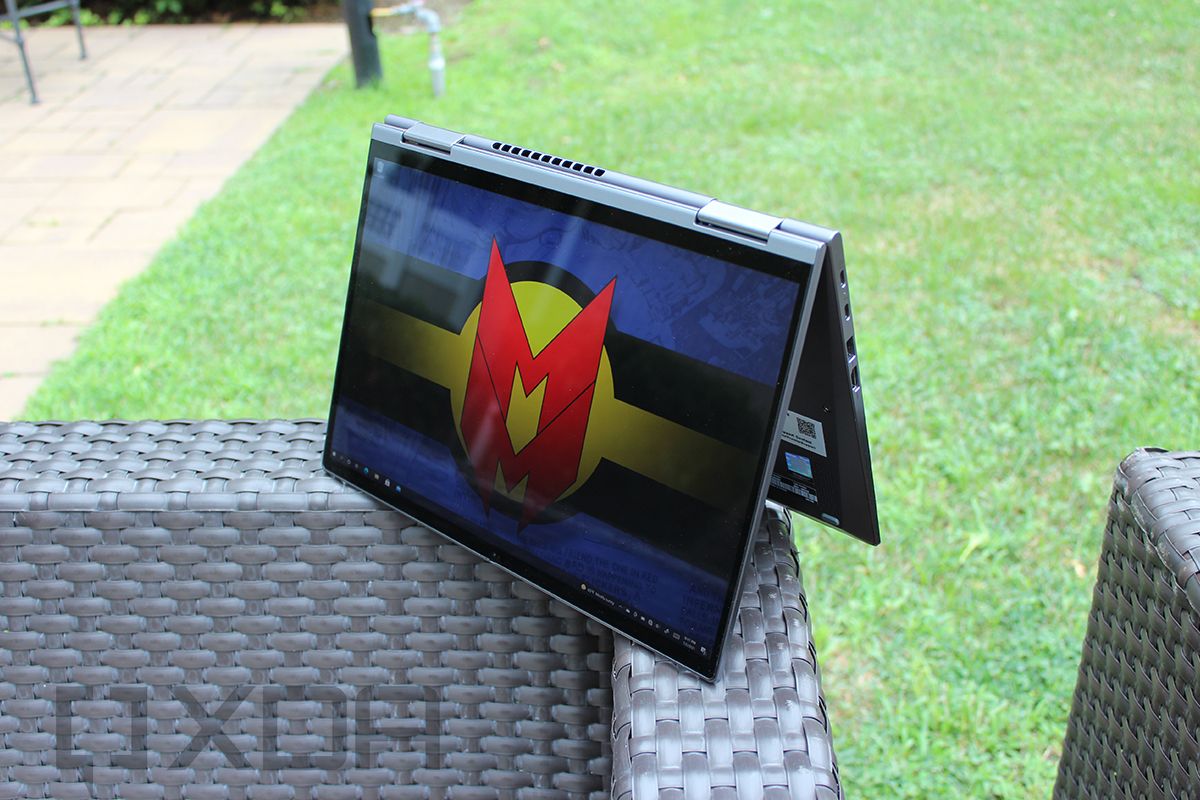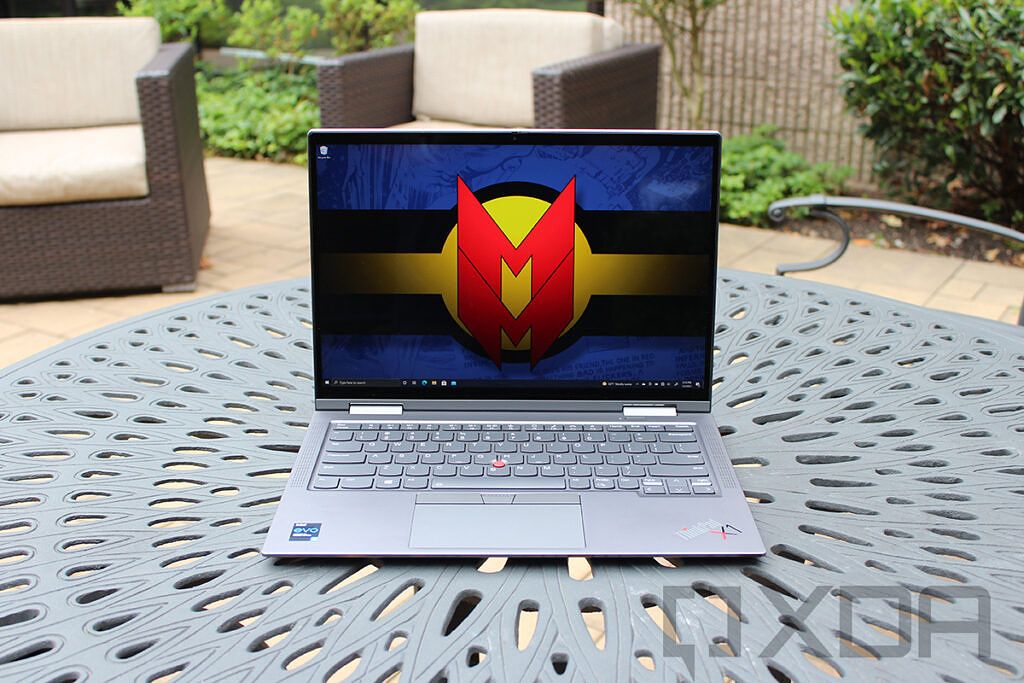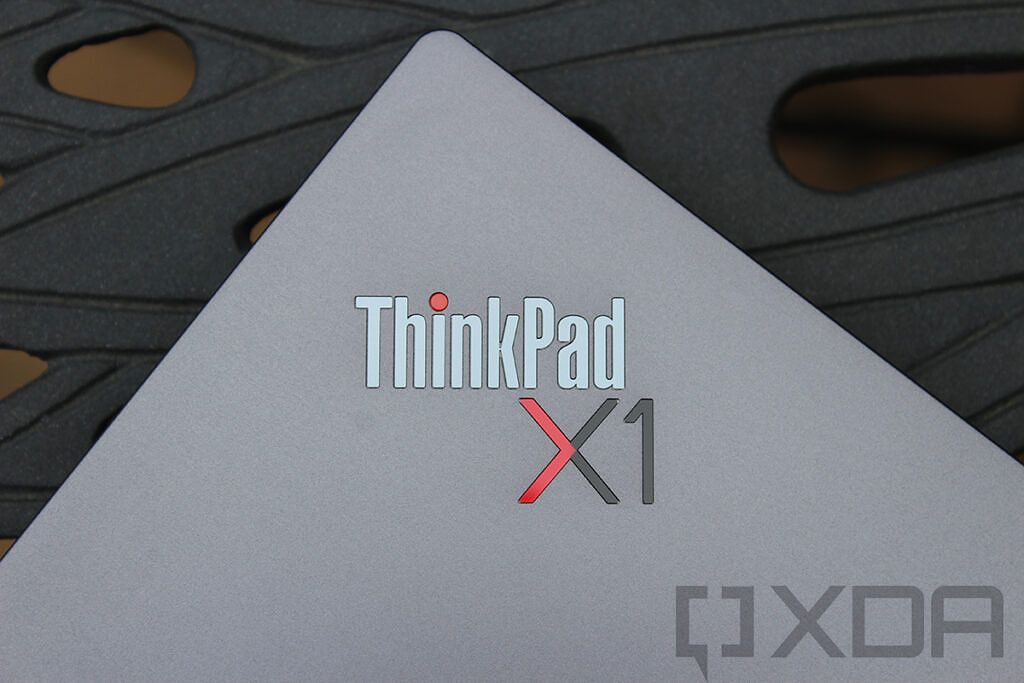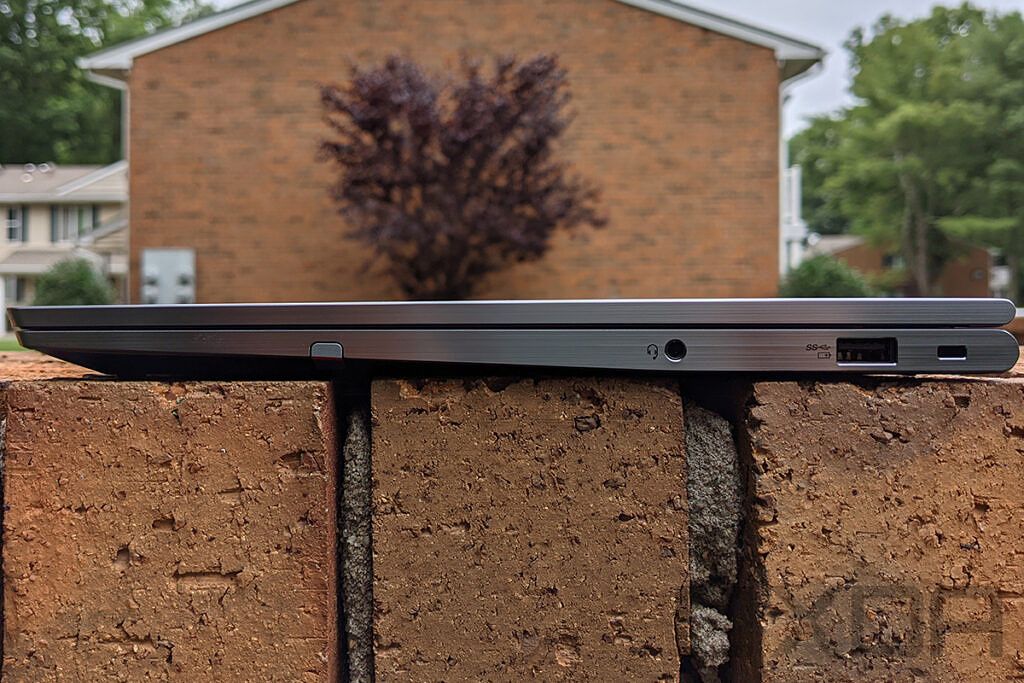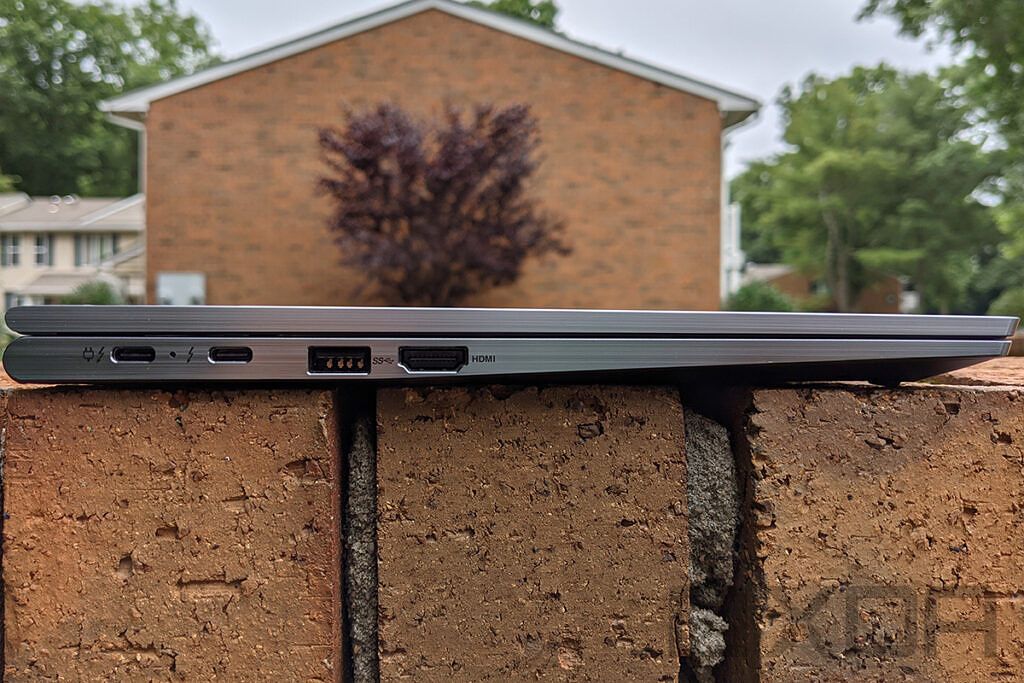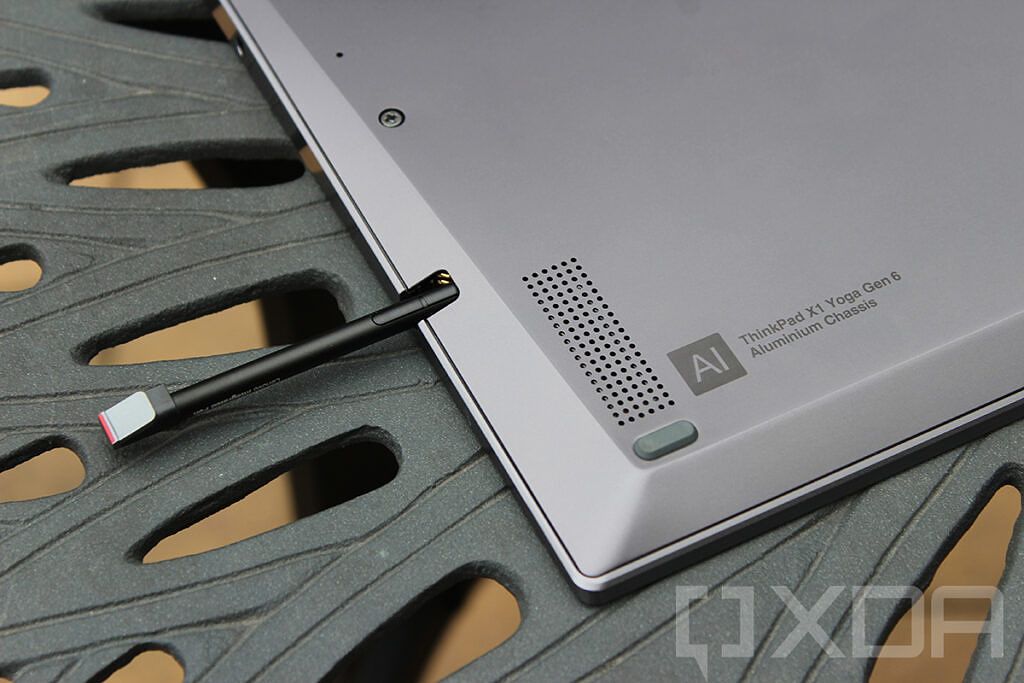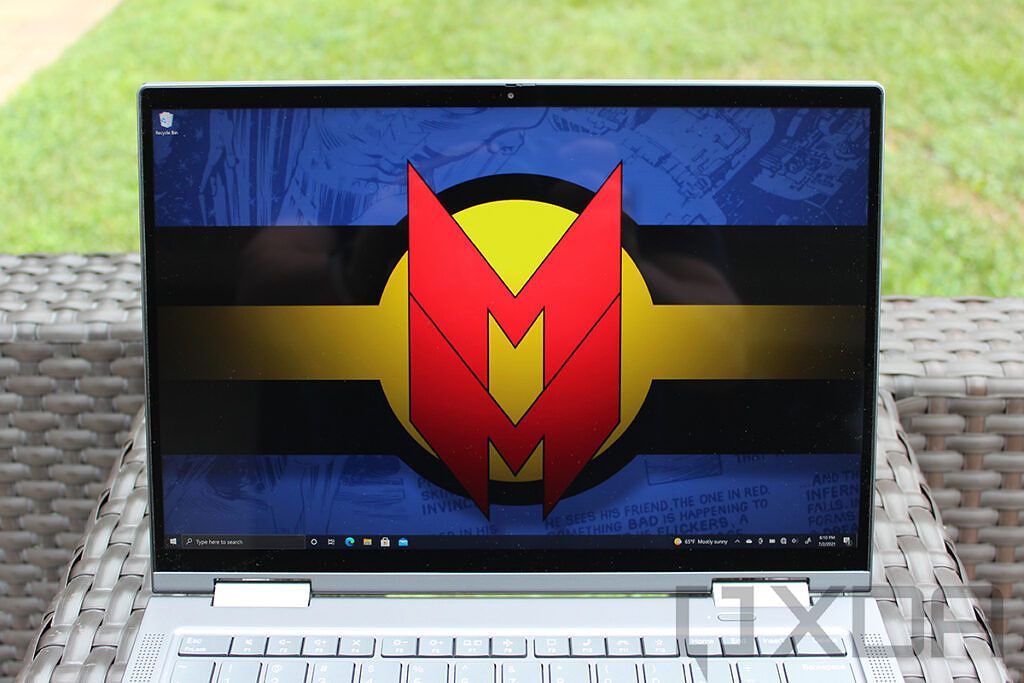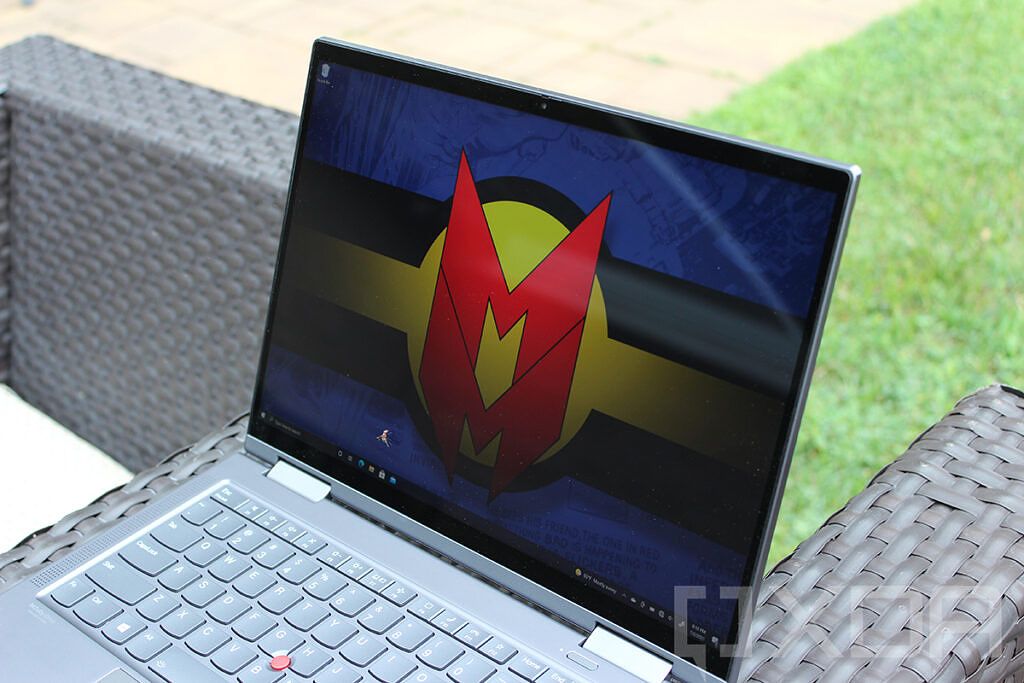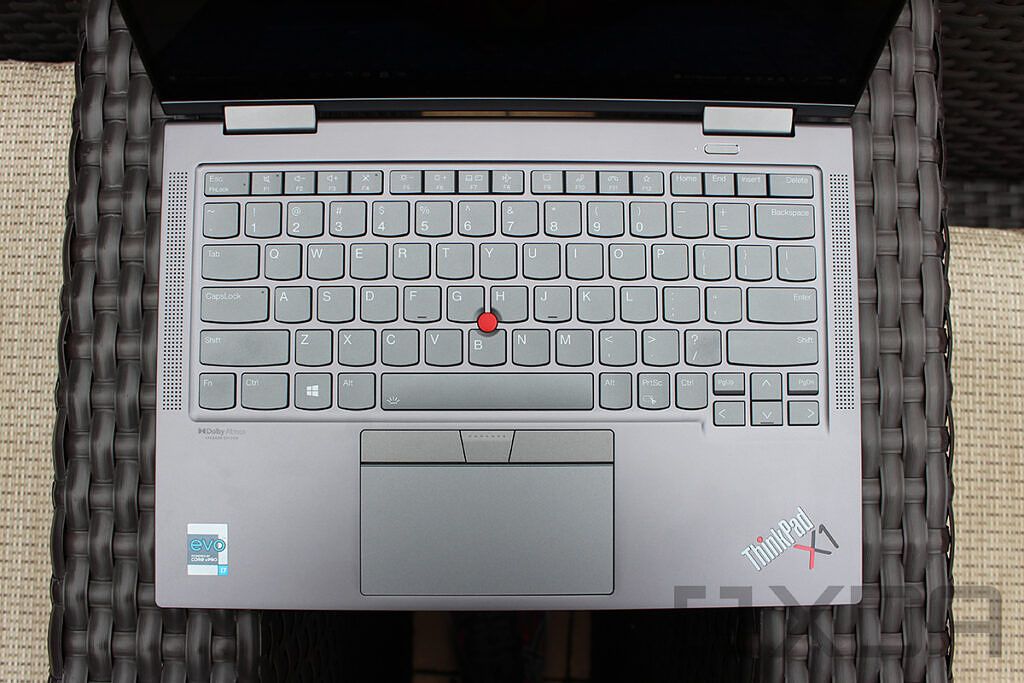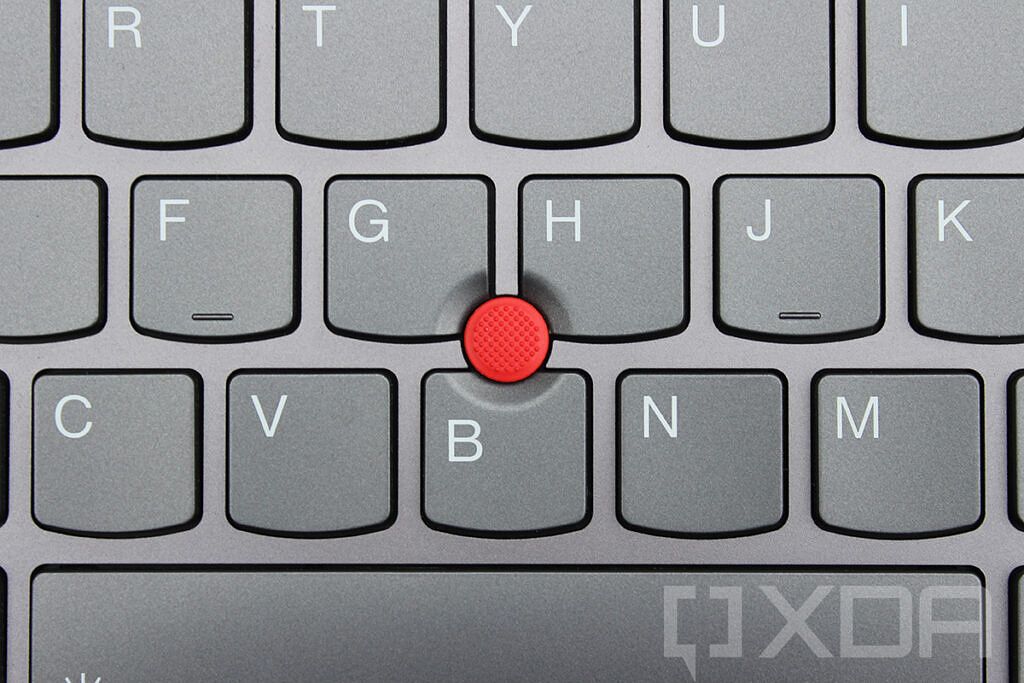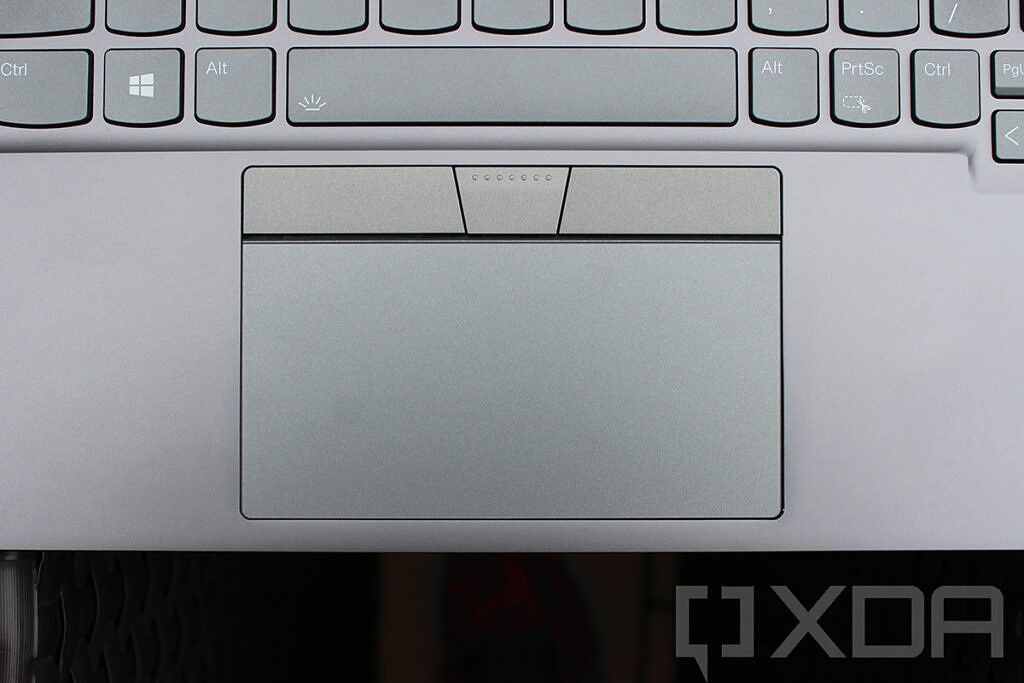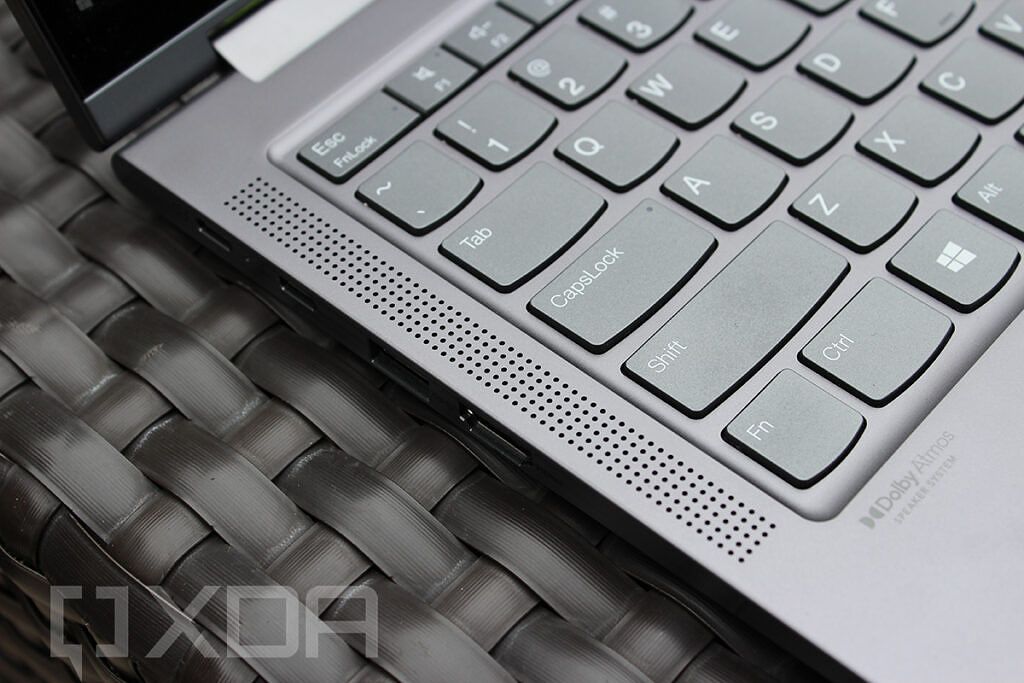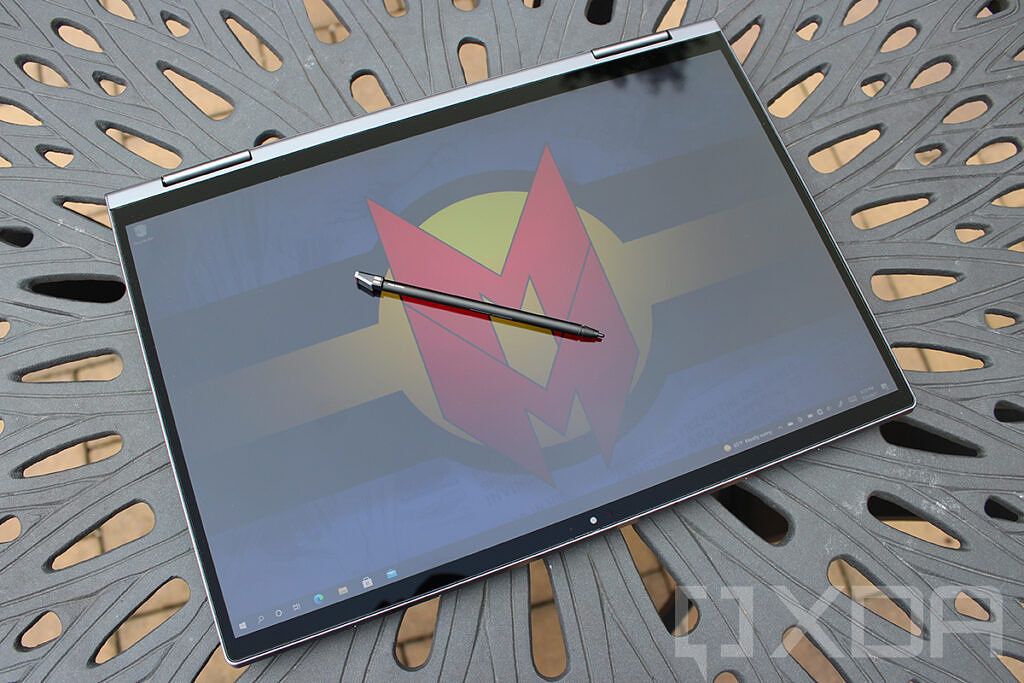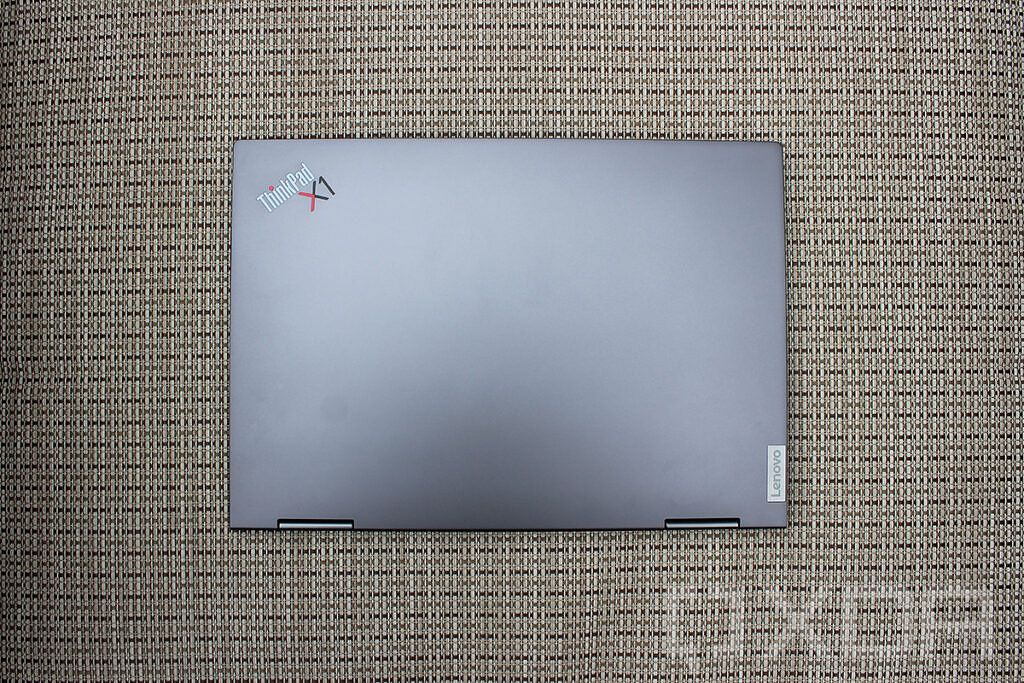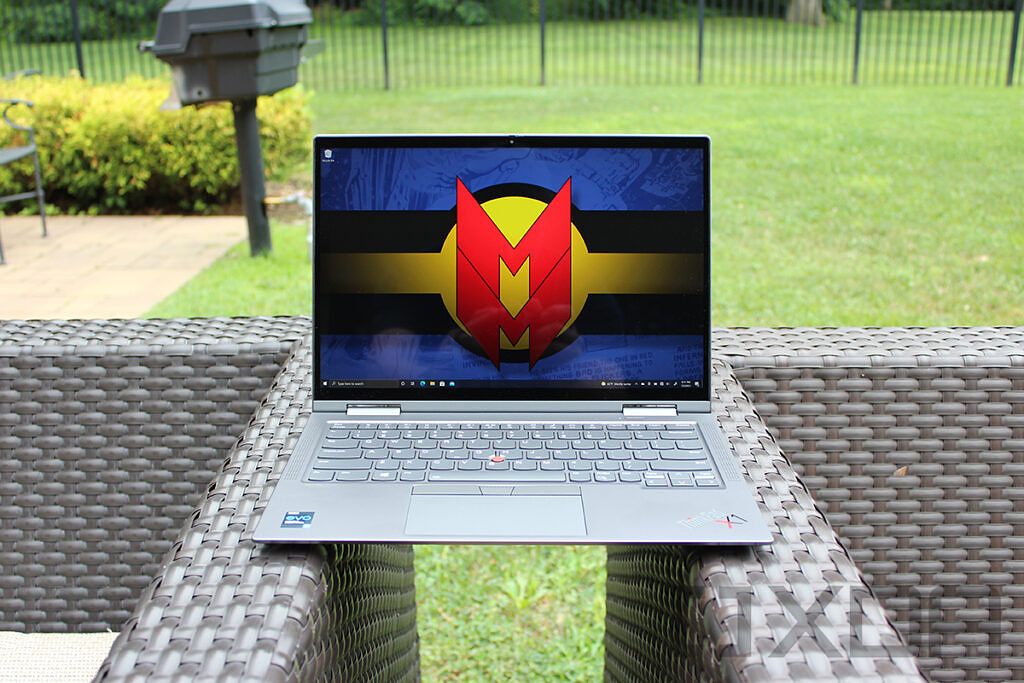Indeed, the goal is to iterate year over year, rather than to release a radical new design like we saw from the Titanium. That doesn't mean the ThinkPad X1 Yoga isn't great. Indeed, it's still one of my favorite convertibles. I'm just trying to break down the difference between the two. If you want super thin and light, a 3:2 screen, and a convertible that's designed for tablet use, definitely check out the X1 Titanium Yoga. But if you want something that still has USB Type-A, HDMI, and a pen garage, that's where the ThinkPad X1 Yoga comes in.
The improvements we're seeing in the new ThinkPad X1 Yoga are the same that we saw in the X1 Carbon. It's got a larger, 14-inch 16:10 display, and there's a big spec bump with the new 11th-generation processors.
Specs
|
CPU |
Intel Core i7-1185G7 (3.0/4.8 GHz) |
|---|---|
|
Graphics |
Intel Iris Xe Graphics |
|
Body |
314.4x223x14.9mm (12.38x8.78x0.59 inches), 1.35kg (3lbs) |
|
Display |
14” UHD (3840 x 2400) IPS, 500 nits, HDR 400, Dolby Vision |
|
Memory |
2 x 8GB LPDDR4-4266 |
|
Storage |
512GB SSD |
|
Ports |
2 x Thunderbolt 4, Type-C (Power, DP 1.4a, Data)1 x USB-A 3.2 Gen 1(One always on)1 x 3.5mm Headphone/Mic Combo Audio Jack1 x HDMI 2.0 |
|
Connectivity |
Intel Wi-Fi 6 AX201 11ax + Bluetooth 5.2 |
|
Audio |
Dolby Atmos Speaker System certification 2 x 2W Speakers and 2 x 0.8WFour array microphones, 360° far-field |
|
Input |
6-row, LED backlight, spill resistant, multimedia Fn keys with UnifiedCommunications controls (F9 – F11)Glass surface multi-touch 4.33” touchpad, TrackPoint |
|
Security |
Discrete Trusted Platform Module (dTPM) 2.0, Smart Power On Fingerprintreader integrated with power button (match-on-chip), ThinkShutter Webcamprivacy shutter, Human Presence Detection sensor with IR camera |
|
Battery |
57Wh |
|
Color |
Storm Gray |
|
Material |
Aluminum |
|
OS |
Windows 10 Pro |
|
Price |
$1,624.50 |
The price listed is current at the time of this writing for Lenovo.com. These prices fluctuate, as the company almost never charges what it lists as full price. In fact, it has a few SKUs of the product that aren't discounted, so you can get the Core i5 model with an FHD display for twice the price. Anyway, the point is that the prices on Lenovo.com fluctuate.
ThinkPad X1 Yoga design, display, and keyboard
The all-aluminum design hasn't changed much
This is the third generation of the product that's made out of aluminum. Before that, the ThinkPad X1 Yoga very much looked like the X1 Carbon but with a 360-degree hinge. Yes, it looks pretty much the same with its Storm Gray color, although it has changed. The 14.9mm-thin chassis is just a touch thinner than the 15.2mm chassis on the Gen 5 model. The dimensions have changed a bit as well to accommodate the taller yet narrower display.
It's a minor change (to us, not for the ThinkPad team I'm sure), but the logo is different. Instead of the black logo that debuted with Gen 3 and stuck around when the team made the switch to aluminum, the new one blends into the Storm Gray chassis.
It's roughly the same weight. Both the Gen 5 and Gen 6 models are listed as 1.35kg, translating to 2.99 and 3.0 pounds, respectively. Given what it is, it's impressively light. After all, it's made out of aluminum, a heavy material, and it has all of the bells and whistles you want.
That includes all of the legacy ports you're used to. On the left side, there's a USB 3.2 Gen 1 Type-A port, a 3.5mm audio jack, and a Kensington lock slot. On the right side, there are two Thunderbolt 4 ports, another USB 3.2 Gen 1 Type-A port, and HDMI 2.0. This is particularly important for businesses that need legacy support, and can't move to something like the ThinkPad X1 Titanium Yoga with only two Thunderbolt ports.
Each of those Thunderbolt ports is capable of supporting dual 4K displays, one 8K display, an external GPU, or a whole bunch of other stuff. If there's a single-cable solution for something you're trying to plug in, Thunderbolt supports it. For this product, there isn't any difference between Thunderbolt 4 and the Thunderbolt 3 ports on previous generations, since Lenovo used all four lanes for 40Gbps data transfer speed.
One other thing you'll find is the built-in pen garage. It's actually one of my favorite features of the X1 Yoga, as it's an easy way to always have the pen charged and with you without it getting in the way.
The new, larger 16:10 display
Lenovo's ThinkPad X1 series is getting the 16:10 treatment, something that's thankfully becoming common across the PC space right now. You might notice the screen size is still 14 inches, but I said it's larger. It's worth remembering that screen sizes are measured diagonally, so they don't always represent total surface area if we're talking about different aspect ratios. The closer you get to a square, the larger the surface area will be.
With the 16:10 aspect ratio, the screen is taller, yet narrower, since the diagonal size hasn't increased. You're getting more surface area by increasing the height, but you're making a bit of a sacrifice on the sides. Your mileage may vary, but it's generally agreed upon this is the right way to go. In fact, Lenovo has said it's always believed this is the right aspect ratio for a laptop.
It comes in FHD and UHD options, and Lenovo sent me the UHD flavor. As you'd expect, it's super-pretty, also supporting Dolby Vision HDR. But other than the size and dimensions, the quality and such haven't changed since last year's model.
It's a good screen too, as you can see from the image above. It supports 100% sRGB, 89% NTSC, 91% Adobe RGB, and 97% P3. It's very impressive. The viewing angle is a full 178 degrees too, so you can look at it from any angle without any noticeable distortion.
In the top bezel, there's a webcam and an optional IR camera. Unfortunately, the webcam is still 720p in the redesigned product. With so many people working from home, 1080p is obviously something you'll want. For some reason, it's still rare to see FHD webcams in PCs that cost thousands of dollars while $300 smartphones have front-facing cameras that can record 1080p at 60fps.
Keyboard and touchpad
The keyboard hasn't changed. It still has the 1.5mm keys you're used to. Personally, I think that the way to go is 1.35mm, now I've been spoiled by the ThinkPad X1 Nano and ThinkPad X1 Titanium Yoga.
There are some modest design changes though, and they're aesthetic. There was some red trim under the buttons on the touchpad with the last generation. It seems like Lenovo is going for a more subtle look this time around.
The TrackPoint is still there, love it or hate it. It's not going anywhere either, so if you don't like it, you can either ignore it or buy something that's not a ThinkPad.
That also means the Precision touchpad has physical buttons above it. The touchpad is wider with this generation too, and a bigger touchpad is always a good thing. It does make it more noticeable that those buttons are there though, taking up valuable real estate. They're meant for use with the TrackPoint, although I actually use them with the touchpad as well.
Audio quality has gotten a big upgrade. There are now four Dolby Atmos speakers, two of which are 2W and placed on either side of the keyboard. Previously, there was a soundbar along the hinge. There are also two 0.8W speakers on the bottom of the device. It's more powerful and more clear than before.
Performance and battery life
The unit Lenovo sent me includes an Intel Core i7-1185G7, 16GB RAM, and a 512GB SSD. The processor is from Intel's Tiger Lake UP3 series, and it's about what you'd expect in a machine like this. It's also the exact same chip that was in the ThinkPad X1 Carbon I reviewed. When we get to benchmarks, you'll see the results are nearly identical, which is a good thing.
Intel's U-series processors are still quad-core, while competitors like AMD and Qualcomm are going up to eight cores in their ultrabook chips. But Intel's strong point these days is its renewed emphasis on integrated graphics. Indeed, Iris Xe is good; it's really good. It lets you do things with ultrabooks that you previously wouldn't want to do without dedicated graphics. You can play games at FHD, do some video editing (even at 4K 30fps if you want), and more.
But of course, you're not buying a ThinkPad X1 Yoga to do any of those things. You're buying it for productivity. Intel U-series processors have always been designed for productivity, so you're not missing out on anything there. You're just getting more.
For benchmarks, I used PCMark 8, PCMark 10, 3DMark, Geekbench, and Cinebench.
|
ThinkPad X1 YogaCore i7-1185G7 |
Yoga 9i 15Core i7-10750H, GTX 1650 Ti |
HP Envy 14Core i5-1135G7, GTX 1650 Ti |
Dell XPS 15 9500Core i7-10875H, GTX 1650 Ti |
|
|---|---|---|---|---|
|
PCMark 8: Home |
3,980 |
3,936 |
3,939 |
3,652 |
|
PCMark 8: Creative |
4,737 |
4,693 |
4,862 |
4,839 |
|
PCMark 8: Work |
3,551 |
3,817 |
3,929 |
3,322 |
|
PCMark 10 |
5,158 |
5,159 |
5,156 |
5,136 |
|
3DMark: Time Spy |
1,781 |
3,643 |
3,333 |
3,742 |
|
Geekbench |
1,592 / 5,518 |
1,232 / 5,608 |
1,384 / 4,604 |
|
|
Cinebench |
1,473 / 4,807 |
1,357 / 4,495 |
I went and sorted my benchmark sheet by PCMark 10 scores, since it's an overall test, you can see what I found. It was on par with a bunch of PCs that have dedicated graphics. Also, both the Yoga 9i and Dell XPS 15 have 45W CPUs, with more cores.
Battery life doesn't suffer for this, which is great. That's all part of having a U-series processor and integrated graphics. What does make the battery suffer is the UHD display. That has four times as many pixels as an FHD display, and sadly, Lenovo isn't making a QHD option anymore. With regular real world usage, you're looking at four to five hours, and that's with the brightness on about a third and the power slider at one notch above battery saver.
Conclusion: Is the ThinkPad X1 Yoga worth buying?
In the world of ThinkPads, the X1 series is as good as it gets. The answer to the question is yes, this is a premium device with one of the best keyboards on the market, a fantastic 4K Dolby Vision display, solid build quality, and some smart features like a built-in pen.
Of course, the X1 family has gotten a bit more complicated. If you want the best clamshell ThinkPad or the best convertible ThinkPad, you can't just say to get the X1. There are two of each now. For clamshells, there's the X1 Carbon and the X1 Nano. For convertibles, there's the X1 Yoga and the X1 Titanium Yoga. Personally, the Lenovo ThinkPad X1 Titanium Yoga is my favorite laptop on the market right now.
But it's not for everyone, nor should it be. Both devices serve their purpose. The Titanium is actually a replacement for the X1 Tablet, so it's actually designed to be an amazing tablet and an amazing laptop. The X1 Yoga is a laptop first. It can be used as a tablet, but that's not a primary use case. It also hangs onto legacy ports like USB Type-A and HDMI, both of which can be very important for business customers.
Here's the bad news. For one thing, it's still got a 720p webcam, which is a real shame. In the era of working from home, the premium ThinkPad needs to do better. The other thing is there's no QHD display option anymore, which I actually think was the perfect balance between resolution and battery life. I could get into a ThinkPad history lesson here, but the 14-inch Yoga used to max out at QHD (it was OLED too), then UHD came along with a QHD option, and now they've finally killed off QHD.
But this is a great all-around product. Other than the webcam, there are no parts of it you're going to be dissatisfied with. That's just how the Lenovo ThinkPad X1 Yoga works, year in and year out. It's one of the best around.
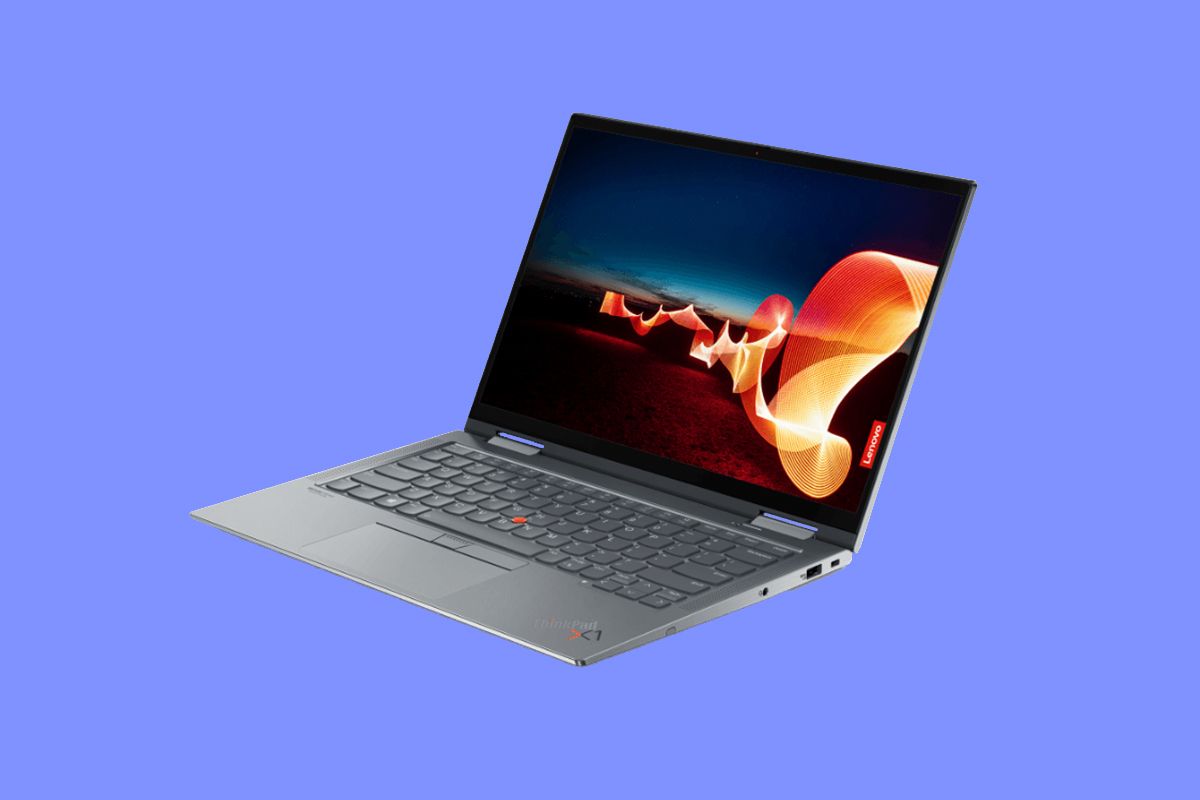
Lenovo ThinkPad X1 Yoga Gen 6
Lenovo's new flagship business convertible has a larger screen, a larger touchpad, and a lot more power.

